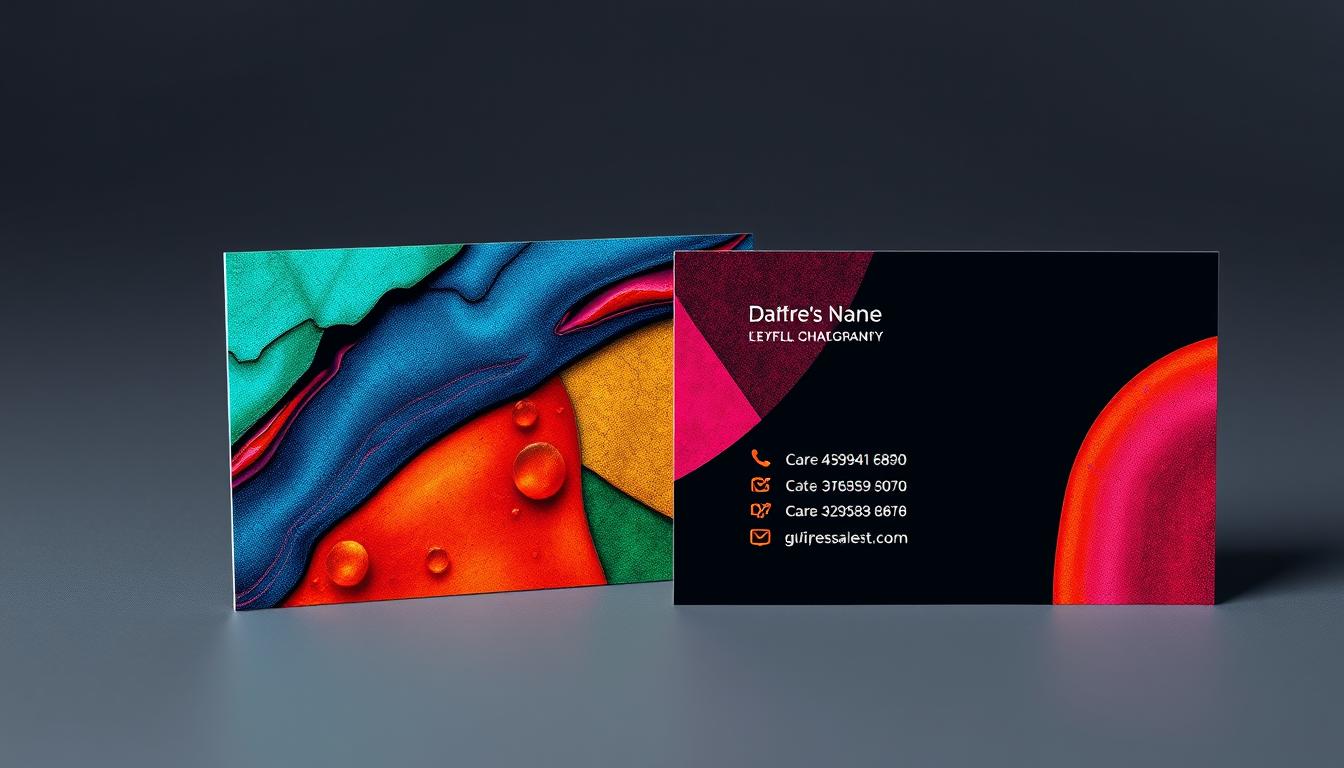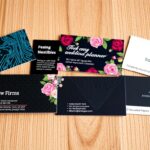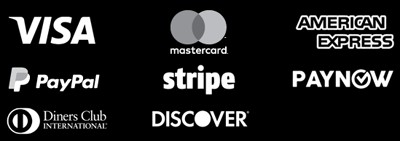Designing and printing business cards is easy, but they do more than share contact info. They show what your brand is all about. If you’re new to business card design, the final product might not match what you imagined. As a small business, you need tips to make a card that reflects your brand’s unique identity.
Using a reliable service like Printing.com.sg can help you create the perfect card. To design a great business card, you must know what makes a good one.
Key Takeaways
- Designing a business card is crucial for creating a lasting brand impression.
- Understanding the qualities of a good business card is essential for an effective design.
- Leveraging professional printing services can help achieve the desired business card outcome.
- Following design best practices, such as using legible fonts and CMYK color mode, is important.
- Aligning the business card design with existing brand materials enhances brand consistency.
Understand the Qualities of a Good Business Card
A well-designed business card is a powerful tool in marketing and networking. It shows your brand, professionalism, and identity quickly. When making the perfect business card, focus on two main things: showing your brand image and standing out in your industry.
Conveys Your Brand Image at a Glance
The size, shape, color, card stock, text, and texture of your business card tell a lot about your company. A full-color, high-quality card shows you care about details and quality. The right design, color, and texture can make your card stand out, leaving a strong impression on others.
Distinguishes You by Industry
Design your business card with your target audience in mind. The rule “less is more” is key in business card design. You want a card that looks good and is easy to understand. A good design connects with customers quickly, strengthening your brand story and chances of making a good impression.
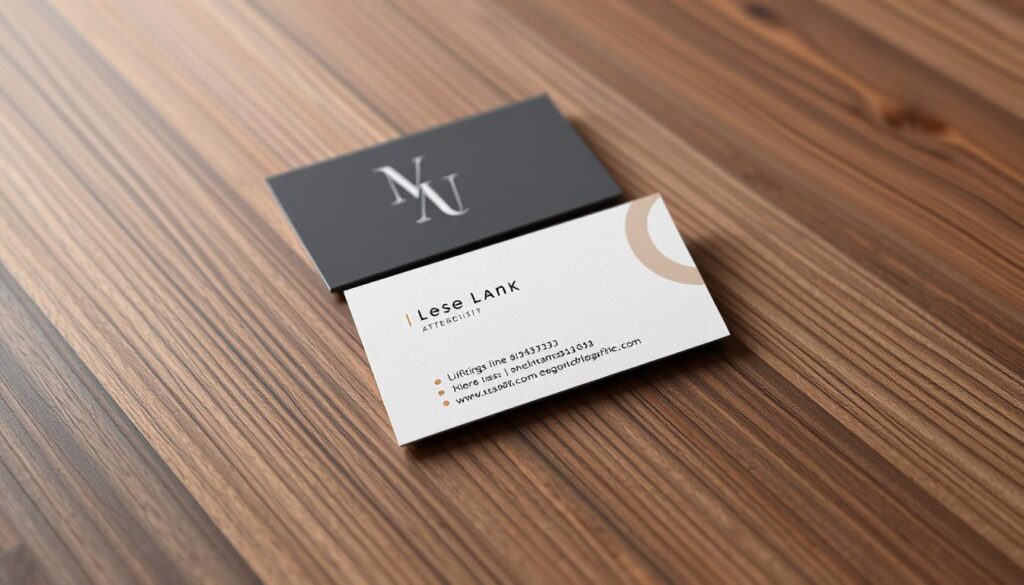
By knowing what makes a successful business card, you can create a marketing material that shows your visual communication and graphic design. It also helps you stand out in your industry. A well-made business card can be the first step to new opportunities.
Study Business Card Designs Across Industries
Designing the perfect business card starts with market research. Look at the best designs from different industries. Lay them out and see what you like and dislike. Also, check out your competitors’ cards to spot industry trends and unique qualities.
By doing a competitive analysis, you can decide if you want to beat or be different from others. It’s better to surpass some qualities to make your business card design stand out.
Recent studies show popular trends in business card designs include:
- Vibrant color block designs
- Sleek, modern layouts with a silk finish aesthetic
- Artistic use of geometric patterns and abstract shapes
- Creative typography featuring unusual font pairings
- Full-bleed photo backgrounds
- High-contrast designs using stark black and white
- Illustrated designs featuring hand-drawn elements
- Watercolor splash designs
- Retro-inspired designs
Studying these top business card designs can give you great ideas. You can create a card that truly impresses your audience.
“Businesses that hand out more than 2,000 business cards per month experience a 25% increase in overall sales.” – Small Business Trends
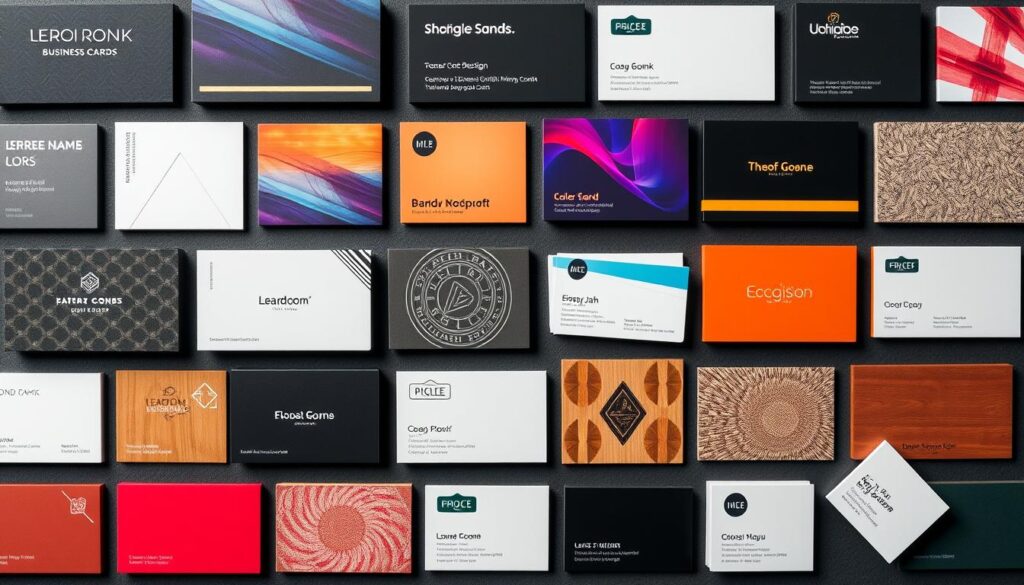
Align Your Business Card with Existing Brand Materials
When you design your business card, make sure it matches your brand’s colors, fonts, and logo. These elements should be the same in your website, marketing materials, and other public platforms. Keeping your brand consistency is key to your card’s design.
Consistent Color Scheme, Fonts, and Logo
Your business card should look like your brand. Use the same colors, fonts, and logo as in your branding and print design. This makes your brand easy to recognize and memorable.
Printing.com.sg has many options for making your cards stand out. They offer thick, premium card stocks that last. Their wide range of printing services ensures your card fits perfectly with your brand materials.
“Consistency is key when it comes to building a strong brand identity. Your business card should seamlessly integrate with your other branding elements.”
Apply Basic Design Principles
When designing your business card, it’s key to follow basic graphic design principles. This ensures your card looks good and represents your brand well. Make sure there’s enough space around your card, at least 5mm from the edge. This helps your card print well and makes your info easy to read.
Also, focus on the typography on your card. Choose a font size that’s big enough, like a minimum of 8-point. Pick the CMYK color mode for the best print quality.
To make your card look balanced and nice, use grid systems. This helps arrange your card’s elements well. It keeps your card looking professional and put together.
| Design Principle | Recommendation | Importance |
|---|---|---|
| Margin Space | Minimum 5mm from edge | Ensures high-quality reproduction |
| Font Size | Minimum 8-point | Ensures legibility |
| Color Mode | CMYK | Optimizes printing quality |
| Layout | Use grid systems | Maintains information hierarchy and alignment |
By using these basic print design rules, you can make a business card that shows off your brand. It will also make a strong impression on anyone who sees it.
“Successful design is not the achievement of perfection but the minimization of the imperfection.” – Dieter Rams
Choose the Right Size and Shape
In the world of business card design, the standard size of 3.5″ x 2″ is common. But, Printing.com.sg suggests trying custom shapes to stand out. A unique shape can make your brand identity memorable.
While a traditional rectangular card is safe, think about a vertical layout. It can make your business card unique and memorable.
| Card Size | Advantages | Considerations |
|---|---|---|
| Standard (3.5″ x 2″) |
|
|
| Custom Shapes |
|
|
| Vertical Rectangle |
|
|
Choose a size or shape that fits your brand identity. Make sure it clearly shows what you offer to clients.
Keep the Design Minimal and Simple
In today’s fast-paced world, a simple business card design can be very effective. Many think minimalistic designs are dull. But in print, simple cards often make the biggest impact.
A clean, elegant design with plenty of white space makes your card pop. It highlights your logo, brand, and contact info. This grabs the attention of customers and clients, leaving a strong impression.
- Use a few colors, like black and white or a single color, for a sleek look.
- Choose easy-to-read fonts to make your design stand out.
- Use negative space to focus attention on key details like your name and company.
Going for a minimalist look makes your business card both beautiful and professional. It shows you pay attention to detail. This simple yet powerful design will make you stand out to clients.
“Less is more when it comes to business card design. A clean, minimalist approach allows your brand to take center stage.”
A minimalist business card shows you’re committed to quality and detail. These are key values in business. By keeping it simple, you highlight your brand and make a lasting impression on clients.
10 Tips to Design the Perfect Business Card That Leaves a Lasting Impression
Creating a business card that makes a strong impression is key for networking and building your brand. Here are 10 tips to help you:
- Include all key contact details prominently – Make sure your name, company, role, phone, email, website, and social media are easy to find.
- Incorporate a positioning statement or tagline – A short statement that shows what your brand is about can set you apart.
- Utilize a consistent color scheme, fonts, and logo – Matching your card with your brand’s materials makes your image look professional and unified.
- Allow sufficient margin space – Enough white space around your design makes your card look better and more inviting.
- Choose a legible font size and CMYK color mode – Pick fonts and colors that are easy to read and print well for a top-notch finish.
- Experiment with unique shapes or finishes – Using special design elements can make your card more memorable and impactful.
- Add social media icons – Including your online presence can help you connect with more people and increase engagement.
- Incorporate a call to action – Asking people to visit your website or schedule a meeting can get more responses.
- Utilize QR codes – QR codes can direct people to your website or give them more info about you.
- Personalize with a motivational quote or image – Adding a personal touch can make your card more memorable and leave a positive impression.
By using these 10 tips, you can create a business card that looks great and makes a lasting impression. Remember, your card is a reflection of your brand, so take the time to make it perfect.
“Your business card is a direct reflection of your brand. Make sure it leaves a lasting impression.” – John Doe, Marketing Strategist
Include Key Contact Details Prominently
A well-designed business card must clearly show your contact information. It should have your name, company name, job title, phone number, email, and website. Also, add your physical address and social media handles for more ways to connect.
Name, Company, Role, Phone, Email, Website
Make sure all this important info is easy to see and makes a strong impression. Industry rules say the font size must be big enough for everyone to read.
Physical Address and Social Media
Adding your address and social media links gives people several ways to get in touch. It also helps them learn more about your brand identity and professional networking chances. Keep your design at least 5mm from the edges for the best print quality.
A well-made business card with your contact info is a great networking tool. It leaves a lasting impression and helps you make meaningful connections.
Add a Positioning Statement or Tagline
Adding a positioning statement or tagline to your business card can boost your branding, brand identity, and visual communication. A catchy tagline can set your business apart from others. It makes your marketing efforts stand out.
A survey found that 65% of people remember business cards with a catchy tagline better. This shows that a good tagline can make a big impact on your audience.
For example, Nike’s “Just Do It” slogan is iconic. It captures Nike’s spirit of empowerment and motivation. Your business card’s tagline should do the same for your company.
When writing your positioning statement, focus on what makes your brand unique. It should show how your brand meets your customers’ needs. A clear tagline can encourage people to engage with your brand.
Make sure your positioning statement fits with your brand identity and marketing plan. A well-designed business card can make a strong first impression. It can also drive meaningful interactions with your company.
“A well-designed business card can impact how people perceive a brand, influencing their decision to interact with the company.” – Marketing Strategist, XYZ Consulting
Conclusion
Designing the perfect business card is all about mixing business card design, print design, and professional printing. It’s key to show off your brand identity. Knowing what makes a great business card and matching it with your brand is important.
Using design basics, picking the right size and shape, and adding important details are crucial. These steps help your card stand out and share your brand’s message. Adding unique touches like special finishes or custom illustrations can also boost your brand’s image.
Working with a top-notch printing service like Printing.com.sg is essential for quality. Double-checking your design and using a trusted printing partner ensures your card makes a strong impression. It helps strengthen your brand and build connections with others.
FAQ
What are the key qualities of a good business card?
A good business card shows your brand’s image quickly. It makes your business stand out by industry. It also leaves a strong impression on others.
How can I align my business card with my existing brand materials?
Make sure your business card matches your website and other ads. Use the same colors, fonts, and logo. This strengthens your brand’s look.
What basic design principles should I consider when designing my business card?
Leave at least 5mm of space around the edges. Use a font size that’s easy to read. Design in CMYK for the best print quality.
What size and shape should I choose for my business card?
The standard size is 3.5″ x 2″. But, you can try unique shapes to share your brand message. A vertical card can make you different from others.
How can I keep the design of my business card minimal and simple?
Use simple, elegant lines and lots of white space. This lets your design and info shine without clutter.
What key contact details should I include on my business card?
Show your name, company, role, phone, email, website, address, and social media. Make sure they’re easy to see.
Why should I include a positioning statement or tagline on my business card?
A good tagline sets you apart from others. It makes your brand memorable. It clearly shows what your brand is about and its values.
Resources:
Explore our curated list of recommended resources for printing, design, and free media assets. Whether you need professional printing services, free design templates, or royalty-free photos for your next project, these reliable sites have you covered.1. Printing & Design
- Printing Inc. Description: Singapore-based online printing service offering a variety of print products such as business cards, flyers, brochures, and custom stickers with professional design services.
- Namecards Inc. Description: Specialist in name card printing, providing a wide range of custom designs, finishes, and materials for high-quality business cards.
- Kian Hong Press Description: Established corporate printing company in Singapore, offering solutions for brochures, catalogs, annual reports, and other corporate stationery.
2. Free Design Templates
- Canva Description: Offers a wide range of free and customizable templates for various needs, including presentations, posters, social media, and marketing materials.
- FreePik Description: Provides thousands of free and premium templates for brochures, flyers, business cards, and more, along with editable vector illustrations and graphics.
- Piktochart Description: Focused on data visualization and professional templates for infographics, posters, presentations, and reports, with both free and premium options.
3. Free Royalty-Free Photos
- Pexels Description: Offers high-quality, free stock photos and videos shared by talented creators for commercial and personal use without attribution.
- Unsplash Description: A large collection of beautiful, high-resolution images contributed by photographers worldwide, available for free use in any project.
- Pixabay Description: A community-driven platform offering copyright-free photos, illustrations, and videos for use in any creative project, with no licensing restrictions.

